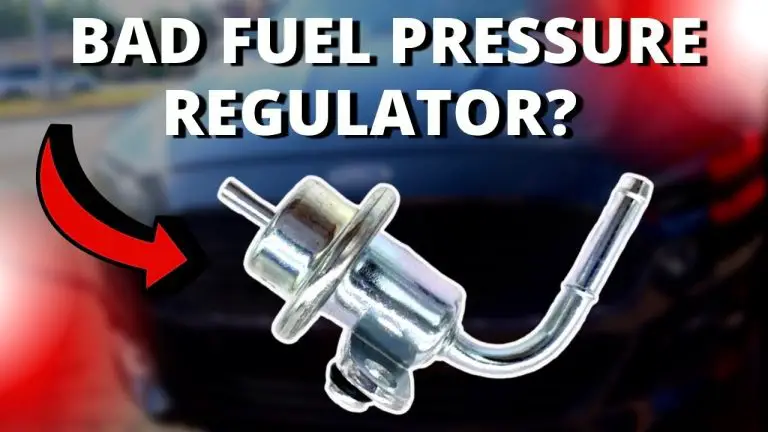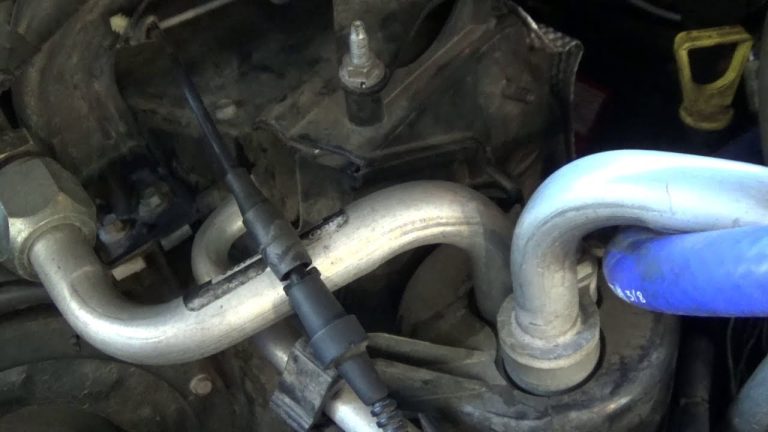Symptoms Of Bad Fuel Tank Selector Valve (Troubleshooting Guide)
The fuel tank selector valve plays a crucial role in vehicles equipped with multiple fuel tanks, allowing the driver to switch between tanks for fuel supply. However, when this valve starts to fail, it can lead to various problems and affect the proper functioning of the fuel system.
Recognizing the symptoms of a bad fuel tank selector valve is important in order to address the issue promptly and avoid potential fuel delivery issues.
One common symptom of a failing fuel tank selector valve is difficulty in switching between fuel tanks. You may find that the selector switch becomes stiff or unresponsive, making it challenging to select the desired tank.
Another indication is fuel delivery issues, such as a loss of fuel pressure, inconsistent fuel flow, or reduced engine performance. The valve may fail to properly direct fuel from the selected tank to the engine, resulting in fuel starvation or inadequate fuel supply.
Additionally, fuel leaks around the fuel tank selector valve or the associated fuel lines can be a sign of valve failure. Any fuel leaks should be taken seriously as they can pose a fire hazard and require immediate attention.
What Are The Symptoms Of A Bad Fuel Tank Selector Valve?
The symptoms of a bad fuel tank selector valve can vary, but here are some common indicators to be aware of:
Difficulty Switching Fuel Tanks
One of the primary symptoms is difficulty in switching between fuel tanks. The selector switch may become stiff or unresponsive, making it challenging to select the desired tank. This can indicate a problem with the valve’s internal mechanism or the electrical connections.
Fuel Delivery Issues
A failing fuel tank selector valve can disrupt the proper flow of fuel from the selected tank to the engine. This can result in fuel delivery issues such as a loss of fuel pressure, inconsistent fuel flow, or reduced engine performance. You may notice hesitation, sputtering, or a lack of power during acceleration.
Fuel Leaks
A faulty fuel tank selector valve can lead to fuel leaks around the valve itself or in the associated fuel lines. These leaks can occur due to worn seals, cracked housing, or damaged connections. Fuel leaks are a serious safety concern and should be addressed immediately.
Incorrect Fuel Level Readings
If the fuel tank selector valve is not functioning correctly, it can cause inaccurate readings on the fuel gauge or fuel level indicator. You may observe erratic or inconsistent fuel level readings, making it difficult to determine the actual amount of fuel in each tank.
No Start or Stalling Issues
In some cases, a malfunctioning fuel tank selector valve can prevent the vehicle from starting or cause it to stall while driving. This occurs when the valve fails to supply fuel from the selected tank to the engine, resulting in fuel starvation and engine shutdown.
What To Do When You Detect A Bad Fuel Tank Selector Valve?
When you detect a bad fuel tank selector valve in your vehicle, it’s important to take appropriate steps to address the issue and ensure the proper functioning of your fuel system. Here’s what you should do:
1. Safety First: If you notice any fuel leaks, prioritize safety by parking your vehicle in a well-ventilated area away from open flames or sparks. Fuel leaks pose a fire hazard, so avoid smoking or operating any electrical equipment near the vehicle.
2. Professional Inspection: Contact a qualified technician or visit a reputable auto repair shop to have your vehicle inspected. They will have the expertise and diagnostic tools necessary to confirm if the fuel tank selector valve is indeed faulty and identify any other potential issues.
3. Replacement of the Fuel Tank Selector Valve: If the fuel tank selector valve is diagnosed as the problem, it will need to be replaced. The technician will remove the old valve and install a new one that matches your vehicle’s specifications. They will ensure proper connections and secure any associated fuel lines.
4. Testing and Verification: After the replacement, the technician should conduct tests to verify that the new fuel tank selector valve is functioning correctly. They may perform fuel flow tests, check for leaks, and test the selector switch to ensure it operates smoothly and selects the desired fuel tank.
5. Regular Maintenance: To prevent future fuel tank selector valve issues, it’s essential to adhere to regular maintenance schedules for your vehicle. Regularly inspect the fuel system, including the valve and associated components, for any signs of wear or damage. Keep up with fuel filter replacements and fuel system cleanings as recommended by the vehicle manufacturer.
Is Replacing A Bad Fuel Tank Selector Valve Expensive?
The cost of replacing a bad fuel tank selector valve can vary depending on several factors, including the make and model of your vehicle, the specific valve needed, and where you have the replacement performed. Here are some considerations that can affect the expense:
OEM or Aftermarket
Opting for an Original Equipment Manufacturer (OEM) fuel tank selector valve from the vehicle’s manufacturer can be more expensive compared to aftermarket alternatives. OEM parts are designed specifically for your vehicle and may provide a higher level of compatibility and reliability.
Labor Costs
The cost of labor for replacing the fuel tank selector valve can vary depending on the shop or dealership you choose. Labor charges can be higher if the replacement involves extensive disassembly or if other components need to be removed to access the valve.
Warranty Coverage
Check if the fuel tank selector valve replacement is covered under any existing warranties, such as a manufacturer’s warranty or an extended warranty. If it is covered, it can significantly reduce your out-of-pocket expenses.
DIY vs. Professional Installation
While it may be tempting to replace the fuel tank selector valve yourself to save on labor costs, it is recommended to have a qualified technician handle the replacement. This ensures proper installation, minimizing the risk of any complications or additional repairs in the future.
How Often Should You Service The Fuel Tank Selector Valve?
The fuel tank selector valve does not typically require regular service as part of routine maintenance. However, it’s important to keep an eye on its functionality and address any issues promptly. Here are some guidelines regarding servicing the fuel tank selector valve:
Regular Inspection
While there is no specific interval for servicing the fuel tank selector valve, it’s a good practice to visually inspect it during routine maintenance checks. Look for signs of wear, damage, or leaks around the valve and its associated fuel lines. If you notice any abnormalities, such as fuel leaks or difficulty in switching between fuel tanks, further investigation is warranted.
Addressing Issues Promptly
If you encounter symptoms of a failing fuel tank selector valve, such as difficulty in switching tanks, fuel delivery issues, or fuel leaks, it’s important to address the issue promptly. Ignoring these signs can lead to further complications and potential fuel system problems. Have the valve inspected and replaced if necessary by a qualified technician.
Following Manufacturer Recommendations
Refer to your vehicle’s owner’s manual or consult with the manufacturer for any specific recommendations regarding the service or replacement of the fuel tank selector valve. They may provide guidance on inspection intervals or maintenance procedures specific to your vehicle’s make and model.
Professional Assessment
If you’re uncertain about the condition of the fuel tank selector valve or suspect any issues, it’s advisable to have your vehicle inspected by a qualified technician. They can perform diagnostic tests, inspect the valve, and provide guidance on whether servicing or replacement is necessary.
Frequently Asked Questions
Q: Can a bad fuel tank selector valve cause engine performance issues?
A: Yes, a bad fuel tank selector valve can lead to engine performance issues. When the valve fails to deliver fuel properly from the selected tank to the engine, it can result in reduced power, engine hesitation, sputtering, or stalling. Insufficient fuel flow can cause the engine to run lean or experience fuel starvation, affecting its overall performance.
Q: Can a faulty fuel tank selector valve cause fuel leaks?
A: Yes, a faulty fuel tank selector valve can cause fuel leaks. The valve is connected to the fuel lines, and if the seals or connections within the valve deteriorate or become damaged, it can lead to fuel leaks. Fuel leaks are a serious safety concern and should be addressed immediately to prevent fire hazards.
Q: Should I replace a bad fuel tank selector valve myself?
A: It is generally recommended to have a qualified technician replace a bad fuel tank selector valve. The valve replacement may involve working with fuel lines and electrical connections, requiring specialized tools and knowledge. A professional technician can ensure proper installation, testing, and safety measures to prevent further complications or fuel system issues.
Q: How long does a fuel tank selector valve typically last?
A: The lifespan of a fuel tank selector valve can vary depending on factors such as usage, vehicle conditions, and maintenance. However, these valves are designed to be durable and long-lasting. With proper care and maintenance, they can typically last for several years. Regular inspections, prompt repairs, and addressing any symptoms of valve failure can help prolong its lifespan.





